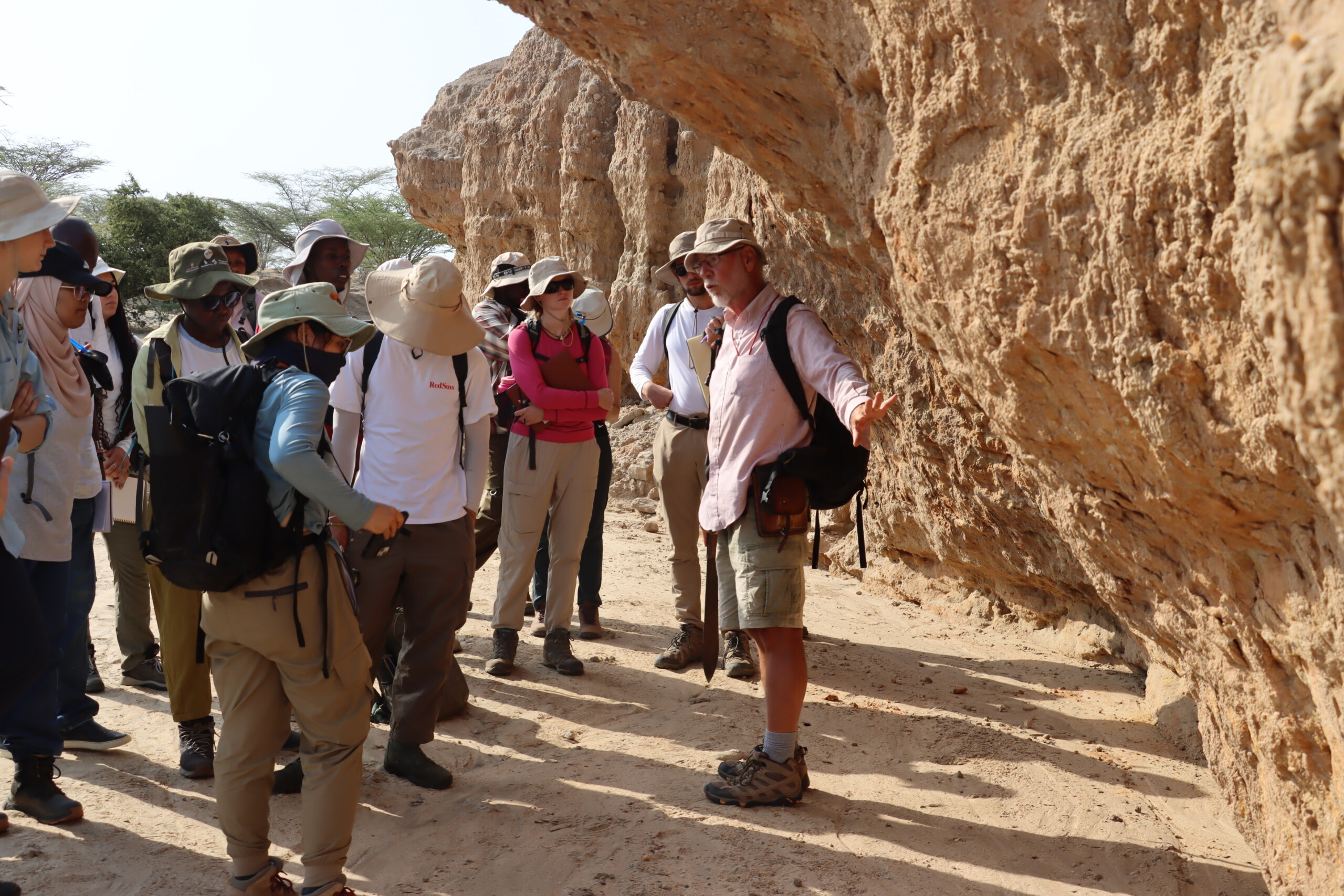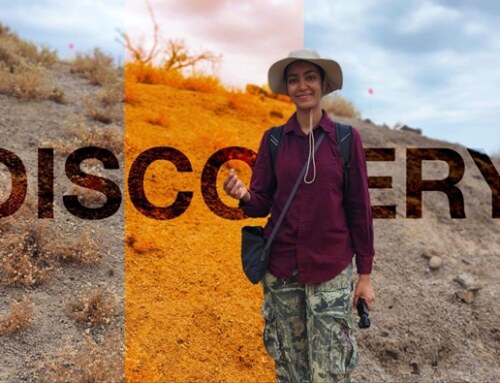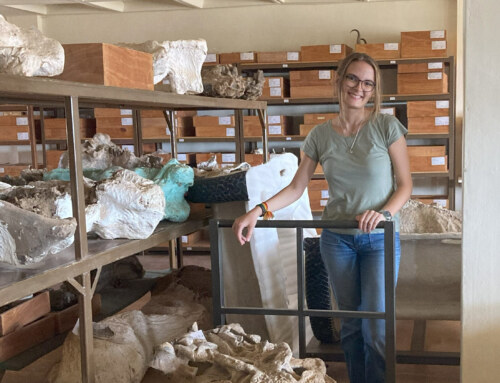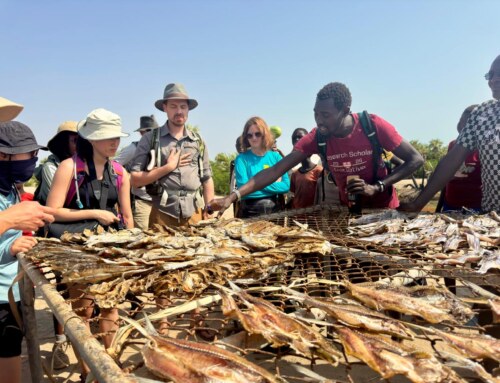Amongst the huge sedimentary rocks that stand tall in Turkana Basin’s landscape, the Harvard Summer Program students spent their time at Lothagam, a site with a lot to offer for archaeological and paleontological studies, as well as geological studies, which is what the students were here for. The sedimentary rocks span across the landscape, in the bright sunlight glowing with their perfectly stacked layers each boasting a different colour from beige to dark red. An open story book of the past, each layer representing a chapter.

A sediment rock in the Lothagam site
Students were guided and taught by Dr. Craig Feibel, professor of Geology and Anthropology at Rutgers University and who has worked in research in the Turkana Basin of Kenya in association with the National Museums of Kenya and the Turkana Basin Institute. During this field trip, he was teaching about the geological formation within Lothagam, the Miocene deposits, how rocks are dated, what materials are used to do that and biomarkers.

Dr. Craig Feibel teaching students at Lothagam about sedimentary layers and biomarkers
Biomarkers as clues to the past
In order to understand the research done at Lothagam better, the students learnt about biomarkers. Biomarkers are like windows to the past, stored as organic compounds in rocks and sediments derived from living organisms and preserved over geological timescales. Some biomarkers are volcanic materials that have either settled in the river channel or been trapped in rocks. Geologists then extract these materials, such as feldspar or pumice from the rocks. These are taken to the lab where geologists can determine the age of that deposition. This is how the age of Turkana Boy was found out, using the volcanic material that was extracted and then brought to the lab to date it.

Left: Emmanuel Aaron examining rocks from the site; Right: Dr. Craig Feibel discussing with students

Emmanuel Aaron, one of the teaching assistants and PhD candidate at Harvard University explaining about sedimentary layers
When observing the rocks, what stood out most was the differently coloured multi-layer depositions. Sedimentary rocks are like a cake. The oldest layer is at the bottom and the youngest layer is at the top. When sediments are deposited, they sit on top of the already existing layer, and then dry up depending on the external activities taking place. This process repeats itself for every layer. Each sedimentary layer contains a different chemical composition and was deposited at a different time period, explaining the different colours of the layers. Some sediments at the time did not experience volcanic activity and therefore do not contain black sandstone. They each have their unique chemical compositions and different minerals. For example the dark red layers contain oxidized iron, whereas black sandstone has lava in it from lava flows that took place during that time.
Students traveling through time
For students to get to know these huge sedimentary rocks and understand the stories they hold, they completed projects describing the textures, colours, volcanic materials and the size of the deposited volcanic ash. This enabled them to know how trained geologists work and what the preliminary things are that they need to know, such as the geological field skills necessary to gather information from a segment and convert it into something readable and meaningful for other people to use, such as paleontologists.

Left: Dr. Daniel Green holding a sedimentary rock; Right: Students examining fossils found on the site
Collaboration across the Fields
Team work makes the dream work, especially in such an interconnected World and when discovering our Earth’s history. This is true for paleontologists and geologists for example. When Paleontologists look for and find fossils in sites like Lothagam, and identify which layer the fossil was found in, geologists are able to know the ages of the sedimentary layers and through that date the fossils. This is possible because geologists come in to examine, describe and determine the ages of the depositions.

Students taking a rest on top of one of the Lothagam hills
So what happens when a fossil is found?
If someone, whose area of expertise is not in fossils, like a geologist or a student, found a fossil, the procedure would be to take a GPS point of where the fossil is, putting a marker with some stones for example and communicating with people working on that site to show them what was found. That person then organizes a team to make informed and accurate decisions. For example at the Lothagam site with the Harvard Summer Program students, there is the TBI Collection Manager. When that scenario happens, they take a GPS coordinate, go back to the field station, organize the team and then make decisions from there.
This work requires many different fields of knowledge and areas of experience, emphasizing the importance of collaboration across groups to keep uncovering and discovering our fascinating Earth. At the Harvard Summer Program and the Turkana Basin Institute as a whole, this is possible and it creates amazing opportunities to find out more about our beautiful planet.

Michelle Muthoni Muchiri the Teaching Assistant during the geological findings
___
Authors: Chloe Woodley and Laura Katana





